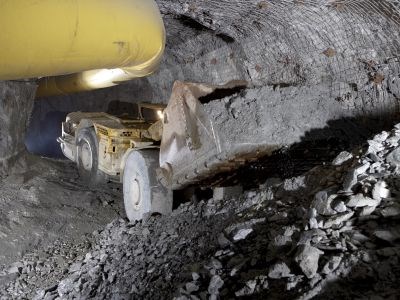Researchers at the Institute for Competitiveness and Prosperity sure didn’t do their homework in the eyes of Dick DeStefano, executive director of the Sudbury Area Mining Supply and Service Association (SAMSSA).
The influential Toronto-based think-tank released a working paper in late June highlighting five of the most impactful industry clusters in Ontario, and is recommending Queen’s Park put the right supports in place to recognize and strengthen them.
In its paper entitled “Clusters in Ontario – Creating an Ecosystem for Prosperity,” the institute focused on Windsor’s automotive industry; Toronto’s marketing, design and publishing companies; Kitchener-Waterloo-Cambridge’s “supercluster” high-tech triangle; Toronto’s financial services district; and the Niagara region’s hospitality and tourism sector.
Left off the list were the hundreds of companies and thousands of skilled jobs tied to Northern Ontario’s mining industry, and championed by SAMSSA.
DeStefano didn’t appreciate the snub of Northern Ontario, considering the industry’s impact in the region and the province’s economy.
“How can they defend the position that they’ve looked at major clusters and not accept the fact that there’s one in Sudbury?”
The institute is a not-for-profit, funded by the Ontario government, examining issues of provincial and national economic competitiveness, productivity and innovation capability. It’s chaired by Tiff Macklem, dean of the Rotman School of Management.
The institute’s definition of a cluster is a group of geographically close and interconnected companies, suppliers, service providers and aligned institutions, all of which exists in Sudbury, insists DeStefano, whose association has grown from three members in 2003 to 115 businesses and organizations today.
The paper recommended Ontario should make key investments to strengthen these clusters, beginning with an overall strategy.
“This strategy should also include individual strategies for each of the five strong traded clusters.”
The paper said, with the economy “shifting away from goods-producing industries in favour of service-producing industries,” employers need the resources to cultivate top-end homegrown talent and to recruit internationally.
The paper recommends Ontario lessen its role in providing venture capital to business and loosen restrictions on foreign direct investment. It was also suggested Ontario devise a marketing and branding campaign to promote these clusters on international trade missions.
In an emailed reply, Jamison Steeve, the institute’s executive director, defended the paper saying the Sudbury mining cluster is one of the province’s smaller ones – employing 2,945 – and didn’t make the cut to be profiled.
“Greater Sudbury’s Metal Mining cluster is the most specialized (dense) cluster in North America. We did not include it despite this because we chose to highlight some of the larger clusters in the province.
“The smallest cluster we chose to highlight in the paper was the hospitality and tourism cluster in St. Catharines-Niagara with 10,800 people. I think the purpose and tone of the paper was clear, that we were merely highlighting some strong clusters and that further cluster identification and promotion is required.”
Steeve, who’s also an instructor at Rotman, worked previously in the premier’s office as principal secretary from 2008 to 2014, helping to craft the government’s agenda and shaping its election campaign messaging.
“Our intention was not to list or discuss all of the clusters in Ontario,” he wrote. “We have done so in the past (I believe mining was highlighted in our 13th annual report fairly recently) and plan to do so in the future.”
DeStefano called the paper and Steeve’s reply “absolutely out of touch.”
“How can you possibly ignore the one predominant cluster in Northern Ontario when you’re writing a report about clusters? It’s so self-serving to focus in on the Golden Horseshoe. I’m not sure of his numbers, or what’s he’s using as criteria.”
DeStefano said 14,000 are employed in Sudbury’s supply sector out of a larger regional workforce of 23,000 in approximately 500 supply companies, of which 320 are located in Sudbury.
They export equipment and supplies to customers across North America, Europe and Russia, the Middle East, Australia and South America.
The total value of output by companies in Sudbury, North Bay, Timmins and Thunder Bay is $5.6 billion.
Despite the global slump in mineral commodity prices, DeStefano said layoffs in the supply sector “have not been significant. In fact, the larger companies have grown.”
And with more than a century of mining in Sudbury, DeStefano added the wealth generation and business spinoffs are critical to driving the region’s economy.
He does concede that his association has more work to do to heighten its profile and promote a greater provincewide appreciation of the industry.
Following the release of the June 27 paper, Steeve acknowledged he had received emails from members of the Sudbury mining community.
DeStefano, who did not get an immediate response from Steeve, was circulating the paper to his members and the City of Greater Sudbury.
“We can only express our discouragement and we will pursue it.”
DeStefano later commented online that this is “another study that fails to recognize the importance of the dynamic mining technology cluster in Northern Ontario that has been acknowledged by the Canadian Chamber of Commerce as the most important mining cluster in Canada. The authors should be ashamed of their report and its focus on cluster potential in Southern Ontario.”




